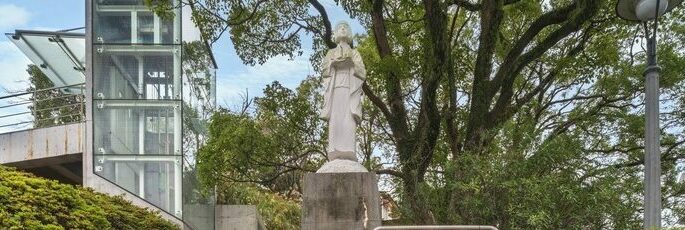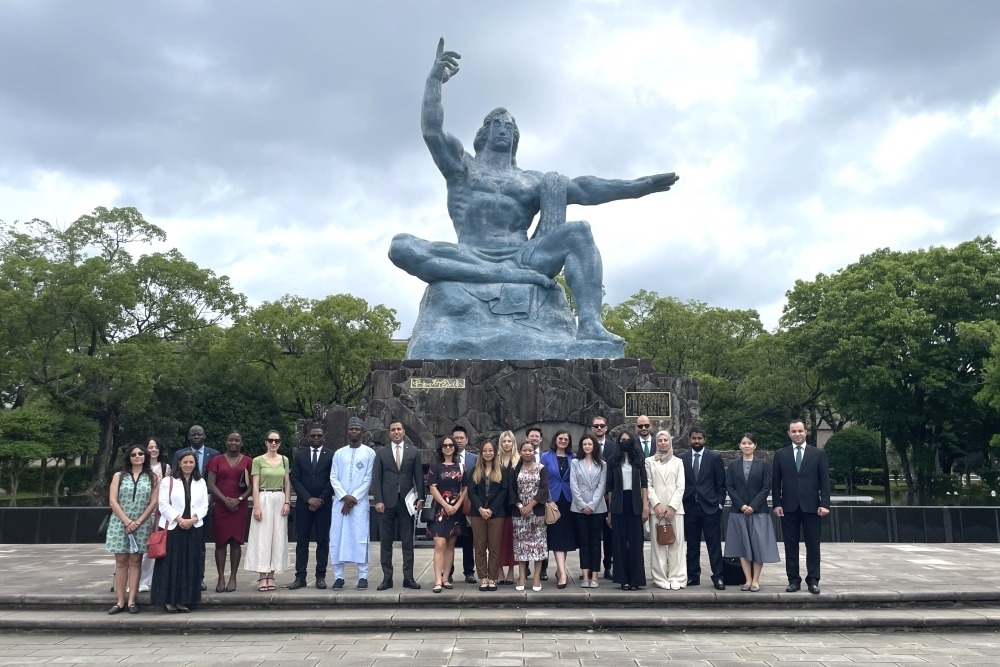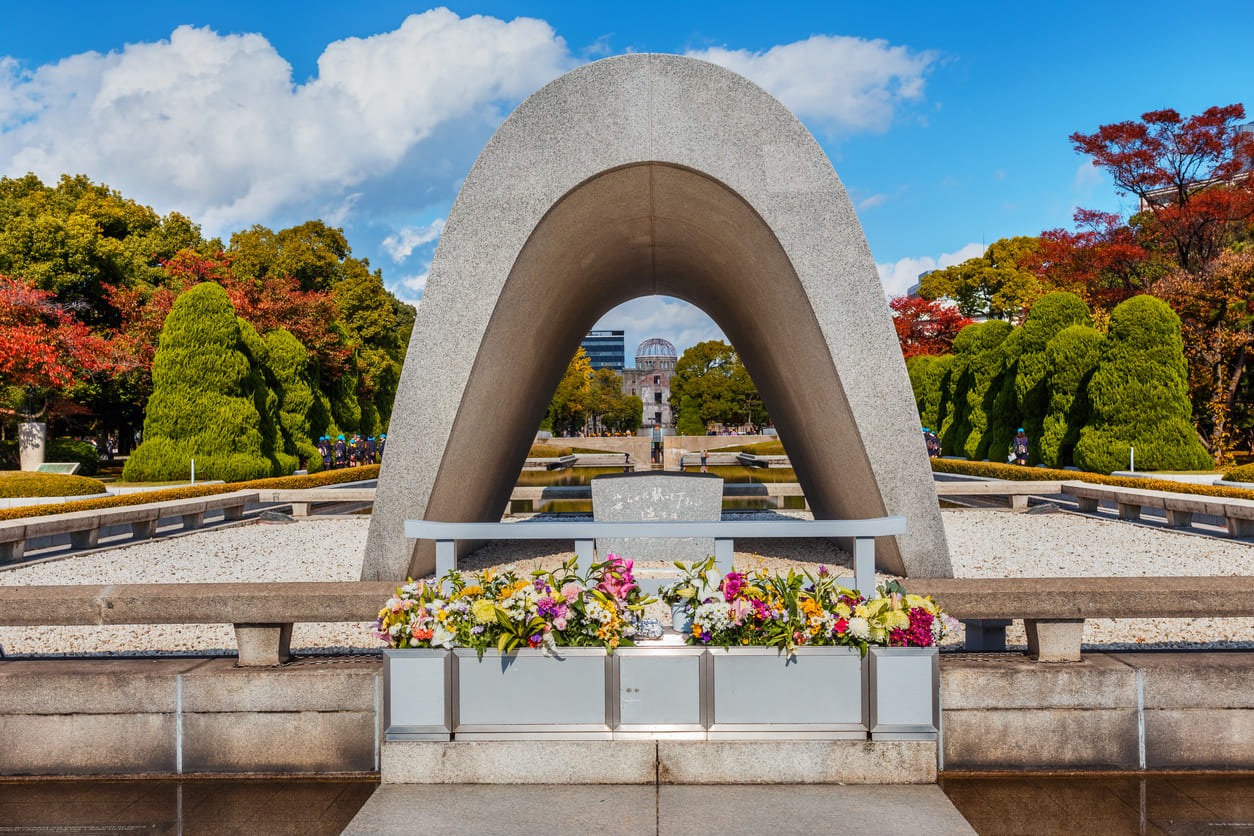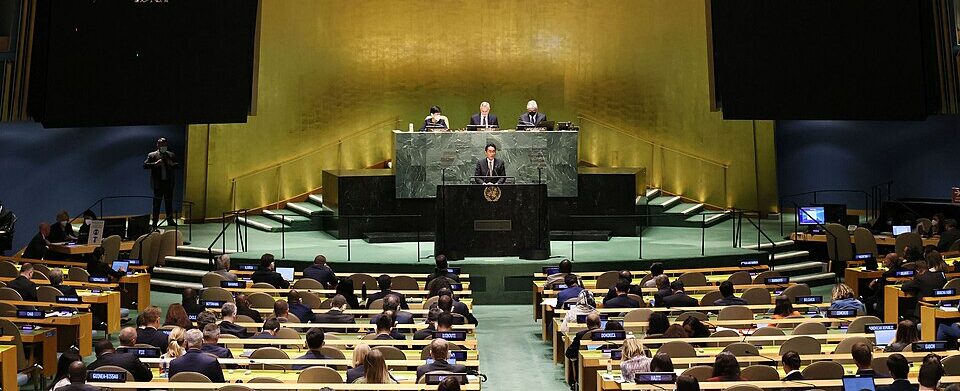80 years since Nuclear Use: Q&A with Tatsujiro Suzuki
On the occasion of the 80th A-bomb anniversary of Hiroshima and Nagasaki, we asked our senior network member from Japan, Dr Suzuki Tatsujiro, what past lessons can be examined to find future pathways for a world without nuclear weapons.
What was/were the most challenging experience/s during your career when dealing with the questions about nuclear weapons? Were there moments of despair and how, if at all, were these turned into moments of opportunities for pulling nations back from the brink?
As a nuclear engineer working mostly on the issue of the nexus between civilian nuclear energy and nuclear weapons, in my understanding the most sensitive issue is the nuclear fuel cycle, and specifically the plutonium issue. In early 2000s, Japan was about to complete the first commercial size reprocessing plant in Rokkasho village, Aomori prefecture. The estimated 40-year lifetime cost of Rokkasho reprocessing plant (800 ton/year) was 14 trillion yen which was much higher than originally expected. I was a senior researcher at the Central Research Institute of Electric Power Industry (CRIEPI), a non-profit think tank sponsored by the utility industry. I wrote several papers to propose a reassessment of the project and to choose spent fuel storage with eventual direct disposal of spent fuel. My argument was that the project was too expensive, and plutonium production should be stopped as it raises serious proliferation and security risks. The paper became very unpopular with the then government and public utilities. I received severe criticism and was even advised not to work on this issue anymore. The paper which I co-authored with my colleague to propose stopping the Rokkasho project was withdrawn by the editor under pressure from the public utility industry. There were other experts, government officials, and industry insiders who were in favor of our opinion. However, there was increasing political pressure against those who opposed the Rokkasho reprocessing plant. In 2005, the Atomic Energy Commission (AEC) had a year-long discussion about whether to start operating the Rokkasho reprocessing plant . Although economic cost comparison was in favor of direct disposal as compared to the reprocessing option, the AEC decided to maintain its reprocessing policy and Rokkasho reprocessing plant started its test operation in 2015. It was a defeat for those who argue reprocessing is neither beneficial nor necessary for Japan. Non-proliferation and nuclear security concerns were not considered a priority.
I had a similar experience after the Fukushima nuclear accident in 2011. I was appointed as vice-chairman of the AEC and was in charge of reassessment of nuclear fuel cycle policy. In 2012, the AEC reported that a once-through fuel cycle was better than reprocessing option and recommended flexible nuclear fuel cycle policy which allowed direct disposal. However, that policy was finally opposed by the proponents of fuel cycle and again the nuclear fuel cycle policy was maintained.
My fight against plutonium continues, but those were my most despairing moments when I felt I failed to save Japan from plutonium surplus and economic disaster.
What, in your understanding, have been the most practical steps taken so far to promote the agenda of nuclear disarmament and how can they been taken ahead?
The most important issue at present is to mitigate the risk of nuclear weapons use. There have been many proposals for risk reduction of nuclear weapons use and promoting the goal of nuclear disarmament. Four efforts, however, are particularly significant in the context of promoting nuclear risk reduction and disarmament.
First is the Dialogue for Risk Reduction. One possible practical step is to initiate a dialogue among nuclear weapon states on the at least three risk reduction measures (as an example): Not to attack nuclear weapon systems with cyber and/or anti-satellite weapons; Not to apply AI to nuclear weapon systems (human involvement in decision making is essential); and Establish Hot Line communication for crisis management.
Second would be the discussion on No-First-Use policy. Only China and India have an explicit No-First-Use policy. But the United States and its allies do not consider an NFU policy to be credible. Nonetheless, two former US administrations (under Obama and Biden) had proposed to introduce “Sole Purpose” policy which is almost identical to NFU policy. So, it would be useful to discuss the risks and benefits of NFU policy between all five Nuclear Weapon States as well as the nuclear umbrella states and nuclear-armed states outside the NPT.
Third key step is not to develop or deploy an Intermediate Range Nuclear Missile (Force). An intermediate range nuclear missile (tactical nuclear weapon) is likely to be used as a first strike weapon. So, the development and deployment of the Intermediate Nuclear Force (INF) increases the risk of first strike during a conflict escalation. It is therefore imperative to discuss possible non-deployment of INF in the particular region.
Fourth significant measure which needs to be reemphasized is the ‘Negative Security Assurance’ (NSA). For non-nuclear weapon states, the NSA is an essential security guarantee against nuclear attack from a nuclear armed states. This non-conditional commitment from nuclear-armed states is one of the cornerstones of the NPT and the Nuclear-Weapon-Free Zone Treaties.
About the Author
Suzuki Tatsujiro is President of a non-profit organization “Peace Depot” based in Japan, and a Visiting Professor at the Research Center for Nuclear Weapons Abolition, Nagasaki University (RECNA). He is also the former Vice Chairman of the Japan Atomic Energy Commission (JAEC). Prior to joining RECNA, Suzuki also served as an Associate Vice President of the Central Research Institute of Electric Power Industry in Japan (1996-2009), a Visiting Professor at the Graduate School of Public Policy, the University of Tokyo (2005-09), an Associate Director of MIT’s International Program on Enhanced Nuclear Power Safety (1988-1993), and a Research Associate at MIT’s Center for International Studies (1993-95) where he co-authored a report on Japan’s plutonium program. He is also Chair of the Executive Committee of Pugwash Conferences on Science and World Affairs, and Non-resident Senior Research Fellow of UN Institute for Disarmament Research (UNIDIR) since 2024. Dr. Suzuki has a PhD in nuclear engineering from the University of Tokyo (1988).
The opinions articulated above represent the views of the author(s) and do not necessarily reflect the position of the Asia-Pacific Leadership Network or any of its members. APLN’s website is a source of authoritative research and analysis and serves as a platform for debate and discussion among our senior network members, experts, and practitioners, as well as the next generation of policymakers, analysts, and advocates. Comments and responses can be emailed to apln@apln.network.
Image: Nagasaki, kyushu – December 11 2021: Atomic bomb memorial statue called “child praying for peace” aside votive decorations of one thousand origami cranes at the Nagasaki National Peace Memorial Hall. iStock




